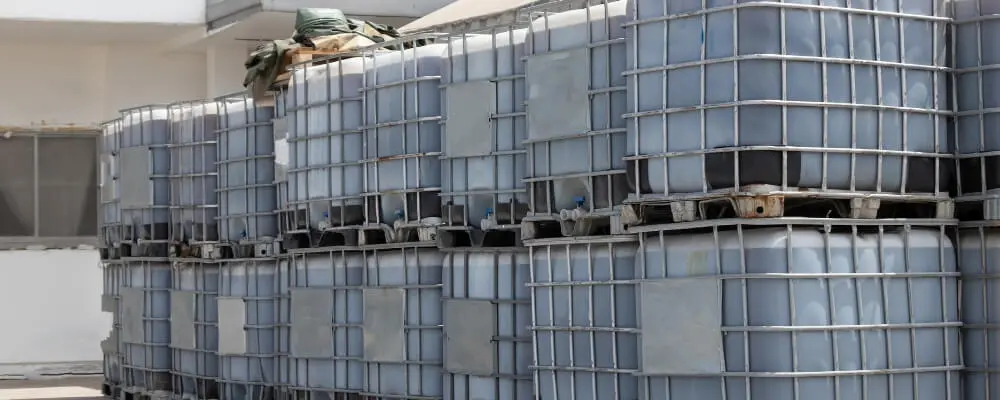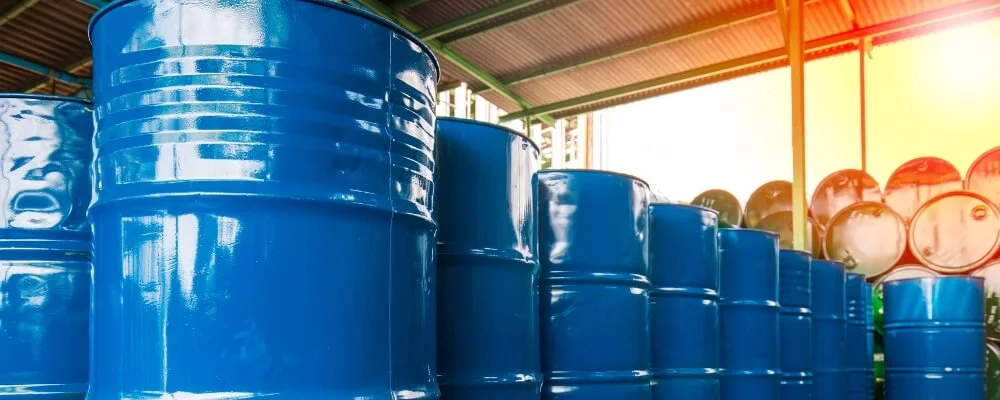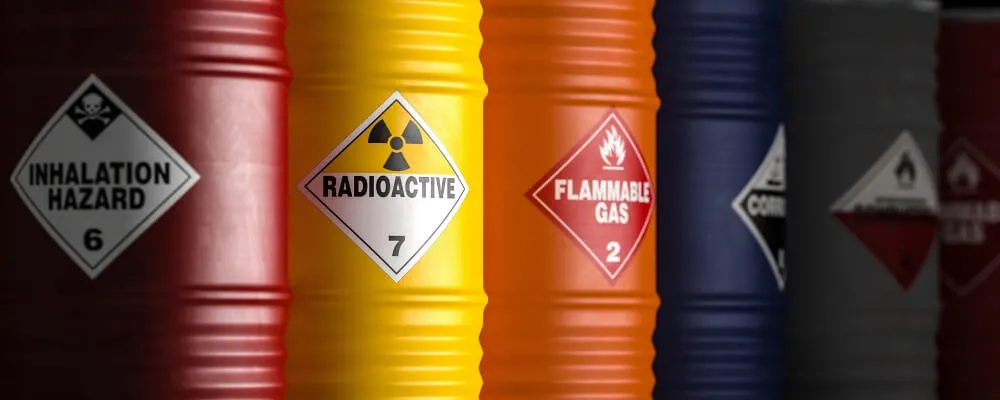Chemicals play a pivotal role in the intricate dance of science and industry. They touch nearly every facet of our daily lives, from medications to cleaning agents. However, as beneficial as they are, chemicals, notably their storage, come with challenges. Proper chemical storage isn’t merely an organizational task—it’s a crucial responsibility that ensures safety, preserves the environment, and maintains the quality of the chemical itself.
Whether you’re a seasoned scientist, an industrial worker, or someone keen on understanding the intricacies of chemical safety, this blog will provide 10 essential tips on how chemicals should be stored. Dive in to equip yourself with knowledge that blends safety, science, and pragmatism.
Importance Of Proper Chemical Storages
Proper chemical storage is essential for many reasons, from safety and economic factors. Here’s a breakdown of the importance of correct chemical storage:
- Safety and Health: The safety of individuals is the primary concern. Many chemicals can be hazardous upon contact, inhalation, or ingestion. Storing them appropriately minimizes the risk of accidental exposure to workers, researchers, students, and anyone in or near the area.
- Environmental Protection: Many chemicals can be harmful to the environment. They can contaminate soil, water sources, and air if they leak or spill. Proper storage ensures chemicals are contained and that any accidental release is minimized or prevented, preserving ecosystems and public health.
- Prevention of Accidental Mixing: Certain types of chemicals can react violently when mixed, which is why understanding their classifications and compatibilities is vital to safe storage. Proper storage categorizes chemicals by compatibility, ensuring that reactive chemicals are kept separate and reducing the risk of unintentional reactions that could lead to fires, explosions, or the release of toxic fumes.
- Preservation of Chemical Integrity: Chemicals have specific storage requirements to maintain efficacy and stability. Factors like temperature, light, and humidity can degrade chemicals, making them less effective or hazardous. Proper storage conditions extend the shelf life of chemicals and maintain their desired properties.
- Economic Considerations: Chemical spills or accidents can be costly. They may damage equipment, cause the loss of valuable substances, or cause costly cleanup processes. Additionally, degraded chemicals may need replacement, adding to operational costs. Proper storage practices reduce these risks and associated costs.
- Regulatory Compliance: Many countries and regions have strict regulations governing the storage of chemicals to ensure public safety and environmental protection. Proper storage ensures compliance with these rules, avoiding legal penalties, fines, or operational shutdowns.
- Emergency Response: In the event of a fire, explosion, or another emergency, the way chemicals are stored can influence the effectiveness of the response. Properly labeled and segregated chemicals allow emergency responders to quickly assess risks and take appropriate action, potentially reducing harm and damage.
- Efficiency and Organization: Properly stored chemicals are easier to inventory, locate, and use. This organization can increase efficiency in research, manufacturing, or other processes, as workers can quickly find and use the necessary chemicals without unnecessary delays.
The importance of proper chemical storage cannot be overstated. Whether the focus is on human safety, environmental preservation, economic factors, or operational efficiency, how chemicals are stored plays a pivotal role in determining outcomes.

10 Essential Tips On How Chemicals Should Be Stored
Proper chemical storage is crucial for safety, environmental protection, and preserving the chemical’s quality and usability. Here are 10 essential tips on how chemicals should be stored:
1. Read the Material Safety Data Sheet (MSDS)
The Material Safety Data Sheet, or MSDS, is a vital document accompanying any hazardous chemical or substance. It contains comprehensive information about the chemical’s identity, physical and chemical properties, health and safety hazards, emergency response procedures, and disposal considerations.
Before storing any chemical, it’s imperative to consult its MSDS. This document will offer insights into the chemical’s volatility, reactivity, flammability, and other crucial characteristics determining its storage needs. Ignoring the MSDS can lead to misinformed decisions about storage, resulting in harmful or even catastrophic consequences.
2. Store Incompatible Chemicals Separately
Many chemicals can react dangerously when they come into contact with specific other chemicals. For instance, mixing acids with bases can result in vigorous reactions producing heat, gas, and possibly splattering. Similarly, oxidizers can provide oxygen to flammables, leading to rapid combustion.
Water-reactive substances, on the other hand, can release gases or even explode when exposed to moisture. As such, it’s paramount to segregate chemicals based on their compatibility. Keeping them separate can prevent unplanned and hazardous reactions which could jeopardize safety.
3. Use Proper Containers
The integrity and compatibility of the container holding a chemical are as important as the location where it’s stored. Chemicals should ideally remain in their original containers since these are designed specifically for their content.
However, if transferring is necessary, the new container must be made of a material that does not react with the chemical. It’s also essential that the containers are undamaged, correctly labeled with the chemical’s name and potential hazards, and always securely sealed. A compromised container can lead to leaks, spills, and exposure to harmful chemicals.
4. Limit Quantity
Storing large amounts of chemicals amplifies risks. More substantial quantities in a spill or accident can mean bigger fires, more significant environmental damage, or more severe health implications. Limiting the amount of stored chemicals to only what is necessary for a specific duration or project significantly reduces risks associated with accidents or mishandling. Moreover, storing fewer chemicals also means less financial loss in a mishap.

5. Use Ventilated Storage
Many chemicals, especially solvents and volatile compounds, release vapors, which can contribute significantly to laboratory hazards if not properly managed. Over time, these vapors can accumulate to levels that pose health risks when inhaled. Some vapors can also form explosive mixtures in the air. It’s thus vital to store such chemicals in areas with adequate ventilation.
This ensures that any released vapors are quickly dispersed, reducing the chances of inhalation or the formation of explosive atmospheres. Cabinets or rooms designed for chemical storage often incorporate ventilation systems that constantly renew the air, preventing the buildup of hazardous vapors.
6. Keep Chemicals at the Appropriate Temperature
Maintaining the right temperature is crucial for the stability and integrity of many chemicals. When exposed to temperatures beyond their recommended range, some chemicals might degrade, become less effective, or even form hazardous byproducts. While refrigeration can be essential for preserving certain chemicals, it’s crucial to differentiate between regular refrigerators and those designated for chemicals. Common refrigerators used for food storage might not provide consistent temperatures, and there’s the risk of contamination.
Additionally, extreme temperatures, whether too cold or too hot, can impact the container’s structure, possibly leading to leaks or breakages. It’s also worth noting that some chemicals can become more volatile or reactive if they undergo temperature fluctuations.
7. Ensure Proper Labeling
Labeling is the first line of information for anyone handling a chemical. An unlabeled or mislabeled container can be a significant hazard because users might be unaware of its contents and associated risks. Using chemical signs, lab safety equipment, and clear labels helps reinforce safety awareness and ensures that workers immediately recognize potential hazards.
A proper label should provide the chemical’s name, concentration, potential hazards, and basic handling recommendations. When a chemical is transferred to another container, it is paramount to label this new container instantly. This immediate action ensures that the container’s contents are not unidentified for a period, reducing the risk of accidents or misuse.
8. Avoid Floor Storage
Storing chemicals directly on the floor exposes them to various risks. They are more likely to be knocked over, leading to spills. Additionally, in the event of a flood or other water intrusion, chemicals on the floor are at higher risk of contamination or release.
Using designated storage solutions, like shelves or cabinets, elevates chemicals and adds a layer of protection. However, the storage structure’s stability is crucial. Heavy or large containers should always be on lower shelves to reduce the risk of them toppling over and causing spills or injuries.

9. Regularly Inspect Storage Areas
Like any other space, chemical storage areas are subject to wear and tear, and over time, containers can degrade. Regular inspections can identify potential issues before they escalate into bigger problems. These checks should look for signs like leaking containers, which could indicate that a chemical is corroding its container or has been damaged.
Outdated chemicals, which might have degraded or become unstable, should be disposed of following recommended guidelines. Proactive inspections help maintain a safe storage environment and ensure that chemicals are in their best state for use.
10. Have Emergency Equipment Ready
Despite the best precautions, accidents can happen. The presence of emergency equipment is a testament to preparedness, ensuring that if an accident occurs, the response can be swift and effective. Emergency syewash stations are vital if someone gets a chemical in their eyes, as immediate rinsing can prevent severe injury.
Fire extinguishers are essential, especially in areas storing flammable chemicals. Spill kits, containing materials that can absorb or neutralize chemicals, help quickly address and contain spills. Equally important is training staff on the use of this equipment. Response time is critical in emergencies, and well-trained personnel can considerably mitigate an accident’s impacts.
Conclusion
While invaluable in myriad applications, chemicals demand a keen sense of responsibility regarding storage. The safety of individuals, the well-being of our environment, and the efficacy of the chemicals themselves are intertwined with our choices in storing them. Armed with these 10 essential tips, we’re not just organizing shelves or clearing out labs; we’re safeguarding our communities, preserving the sanctity of nature, and ensuring that our chemicals serve their purpose effectively and efficiently.
As we wrap up this guide, let’s commit to a diligent, informed approach to chemical storage, recognizing its paramount importance in the broader tapestry of safety and scientific integrity.

